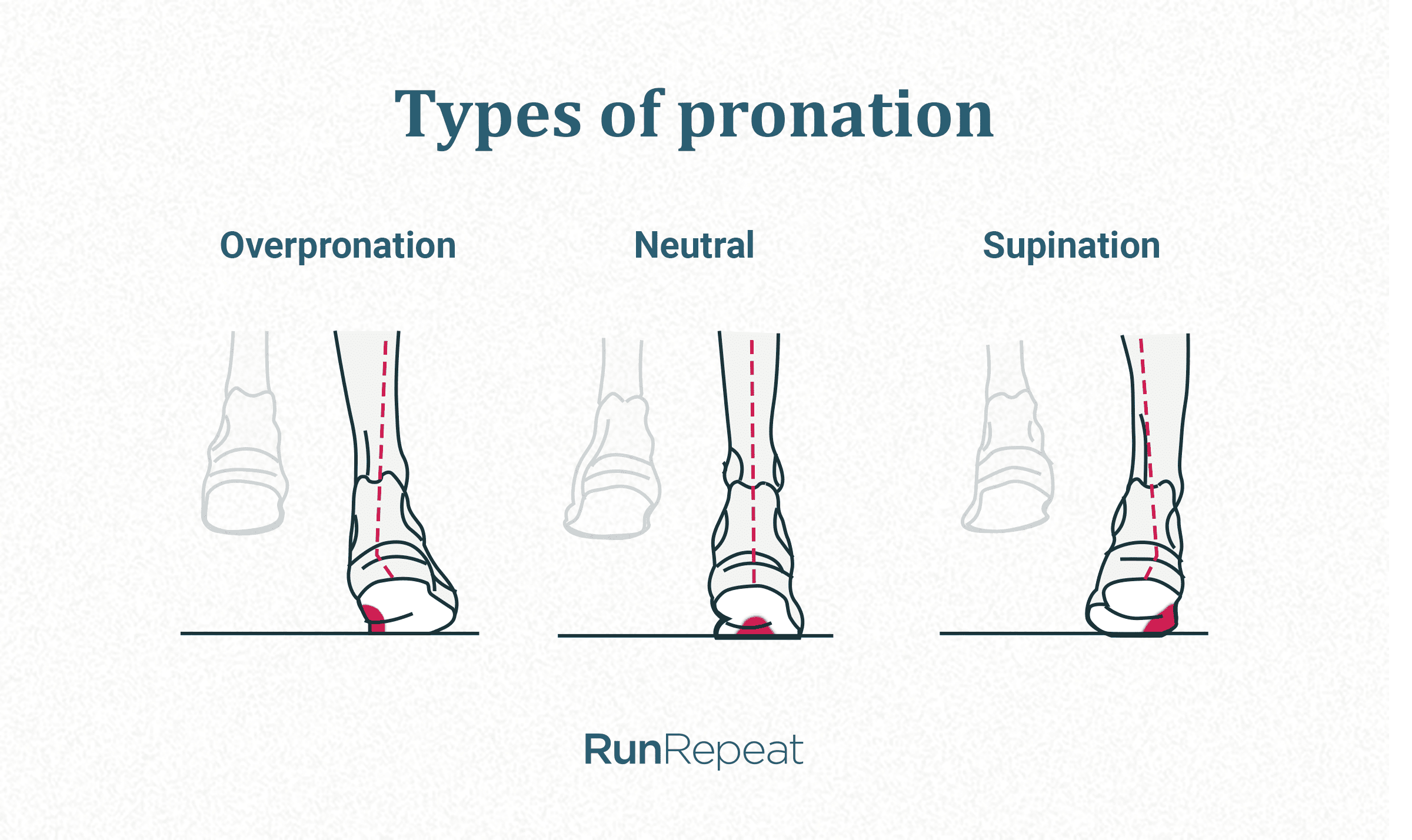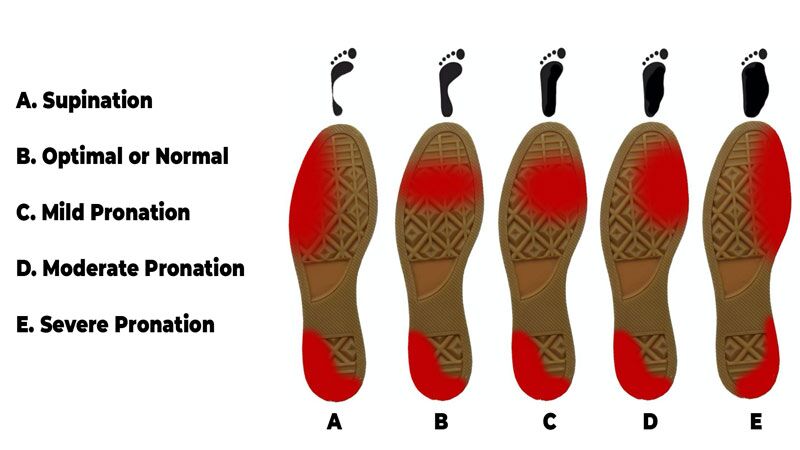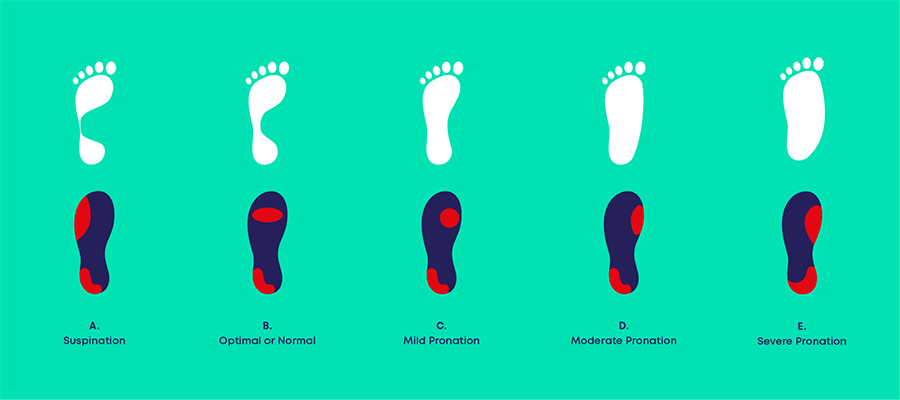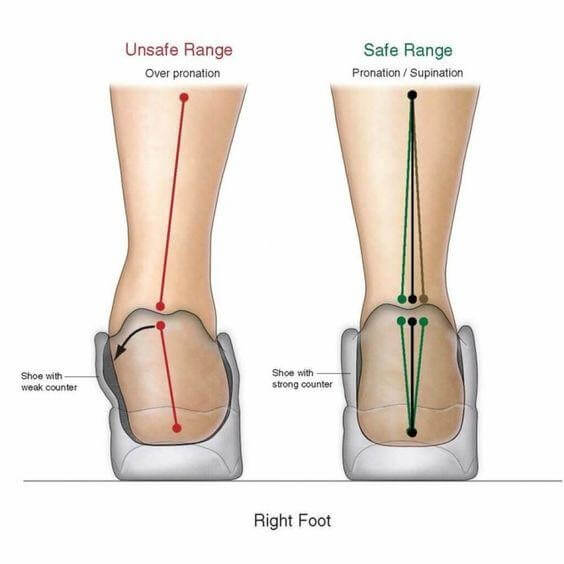When it comes to finding the perfect pair of shoes, understanding the concept of pronation is crucial. Whether you’re an avid runner, a sneaker collector, or just someone who loves comfortable shoes, knowing how pronation affects your choice can lead to a happier, healthier experience on your feet. In this comprehensive guide, we’ll explore what pronation is, its types, how it impacts shoe selection, and share tips and product highlights to help you make informed decisions.
What is Pronation?
Pronation refers to the natural movement of your foot as it strikes the ground during walking or running. It involves a rolling motion of the foot, which helps absorb shock and distribute weight across the foot’s arch. Effective pronation allows for smooth movement, offering stability and comfort as you engage in various activities.
The Biomechanics of Pronation
Understanding the biomechanics behind pronation can help you appreciate its significance. As you step, your foot lands slightly on its outer edge (the lateral side) before rolling inward to absorb impact and push off the ground. This motion is essential for maintaining balance and preventing injuries. However, excessive or insufficient pronation can lead to various issues, including plantar fasciitis, shin splints, and other musculoskeletal problems.

Types of Pronation
There are three primary types of pronation: neutral, overpronation, and underpronation (also known as supination). Each type affects how your foot interacts with the ground, which in turn informs your shoe choice.

1. Neutral Pronation
This is considered the ideal foot movement. If you exhibit neutral pronation, your foot rolls inward just enough to absorb shock without excess movement. Shoes designed for neutral pronators provide balanced support and cushioning.

2. Overpronation
Overpronation occurs when the foot rolls inward excessively. This is common among runners with flat feet or low arches. Overpronators need shoes with motion control and stability features to counteract excessive inward roll and reduce injury risks.

3. Underpronation (Supination)
Underpronation happens when the foot rolls outward too much, providing insufficient shock absorption. Runners with high arches are often underpronators. Shoes designed for this type typically have added cushioning to enhance shock absorption.

How Pronation Affects Your Shoe Choices
Now that you understand the types of pronation, let’s discuss how this knowledge affects your footwear choices. Choosing shoes designed for your specific pronation type can enhance your comfort and performance while reducing the risk of injury.

Finding the Right Pair: A Step-by-Step Guide
- Assess Your Foot Type: Consider visiting a specialist to analyze your foot structure and gait.
- Consider Your Activity: Different activities (running, walking, casual wear) require different support.
- Try Before You Buy: Always test shoes in-store, paying attention to how they feel during movement.
- Seek Professional Advice: A running store or a podiatrist can provide invaluable guidance.

Real-World Footwear Experiences
Personal experiences can greatly influence our footwear decisions. Let’s look at three anecdotal case studies highlighting how pronation affected individuals’ shoe choices.
Case Study 1: Emily the Runner
Emily is an avid marathon runner who initially ignored her arch type. After experiencing shin splints, she sought advice and learned she was an overpronator. Investing in a pair of motion control shoes helped Emily run without pain, improving her performance and enjoyment.
Case Study 2: Mike the Casual Walker
Mike, a casual walker with a high arch, always felt discomfort in his sneakers. After consulting with a specialist, he learned he was underpronating. Switching to shoes with better cushioning and arch support drastically increased his comfort during leisurely walks.
Case Study 3: Sarah the Fashion Enthusiast
Sarah loved stylish shoes but often faced foot pain. Learning about her neutral pronation allowed her to choose fashionable yet supportive options, bridging the gap between style and comfort.
Understanding Shoe Technology: What to Look For
Modern footwear technology has advanced significantly to cater to various pronation types. Here are some features to consider:
Cushioning
Shoes for underpronators usually have extra cushioning to support the foot’s shock-absorbing capacity. Brands like ASICS and Saucony offer specialized cushioning technologies tailored for this pronation type.
Stability
Shoes designed for overpronators provide additional stability and support, often featuring a firmer midsole. Look for brands like Brooks and New Balance, known for their motion control technologies.
Flexibility
Neutral shoes typically offer a balance of cushioning and flexibility. This is ideal for neutral pronators who require a shoe that can adapt to their natural foot motion while still providing support.
Comparative Analysis: Popular Footwear Brands
| Brand | Type of Pronation | Key Features | Price Range |
|---|---|---|---|
| ASICS | Underpronation | Gel cushioning, lightweight, breathable | $100 – $160 |
| Brooks | Overpronation | Adaptive cushioning, support frame | $120 – $180 |
| New Balance | Neutral | Lightweight, versatile, responsive | $90 – $150 |
Tips for Selecting Your Shoes Based on Pronation
Here are some quick tips to help you choose the best shoes based on your pronation type:
1. Consult a Specialist
If you’re unsure about your pronation type, visit a podiatrist or a specialty running store for a gait analysis.
2. Prioritize Comfort
Choose shoes that feel comfortable when you try them on. Don’t just go for looks; your feet will thank you!
3. Test Them Out
Walk or run in the shoes before purchasing. Many stores have treadmills for this very purpose.
4. Replace Regularly
Shoe performance declines over time. Regularly replace your shoes to maintain optimal support.
Pros and Cons of Different Pronation Types
Understanding the pros and cons of each pronation type can help you better navigate your footwear options.
Neutral Pronation
- Pros: Balanced distribution of weight, versatile shoe options.
- Cons: Must choose the right level of cushioning to match activities.
Overpronation
- Pros: Shoes provide better stability and support.
- Cons: Fewer fashionable options compared to neutral shoes.
Underpronation
- Pros: Cushioned shoes enhance shock absorption.
- Cons: May face limited options in some local stores.
Frequently Asked Questions (FAQs)
1. How can I determine my pronation type?
You can determine your pronation type by visiting a specialty running or shoe store that offers gait analysis, or by examining your old shoes for signs of wear.
2. Can my pronation type change over time?
Yes, factors such as age, fitness level, and injury can lead to changes in your foot mechanics and pronation type.
3. What are the best shoes for overpronators?
Look for shoes that offer motion control and stability features. Brands like Brooks and ASICS provide excellent options.
4. Are neutral shoes suitable for everyone?
No, neutral shoes are designed for individuals with neutral pronation. Those with other pronation types may require more specific features.
5. Can improper shoe selection lead to injuries?
Absolutely! Wearing shoes that don’t match your pronation type can lead to discomfort and injuries like shin splints and plantar fasciitis.
6. How often should I replace my running shoes?
Generally, running shoes should be replaced every 300-500 miles, depending on wear and tear.
7. Are higher-priced shoes always better?
Not necessarily. A higher price doesn’t always guarantee better comfort or performance. Focus on fit and functionality.
8. What features should I look for in shoes for flat feet?
For flat feet, look for shoes with good arch support and motion control to prevent overpronation.
9. Is it normal for my shoes to wear out unevenly?
Yes, uneven wear can indicate your pronation type and may suggest that you need a different style or support level in your shoes.
10. How can I improve my pronation?
Strengthening exercises for your feet and incorporating orthotics into your shoes can help improve your foot mechanics.
Conclusion
Understanding pronation is essential for anyone looking to invest in the right footwear. Whether you’re running marathons, walking casually, or searching for stylish yet supportive shoes, knowing your pronation type will lead you to the pair that meets your needs. With the right shoes, you can not only enhance your comfort and performance but also prevent injuries and enjoy your activities more fully.
Always remember, good footwear is an investment in your health! Happy shoe shopping!